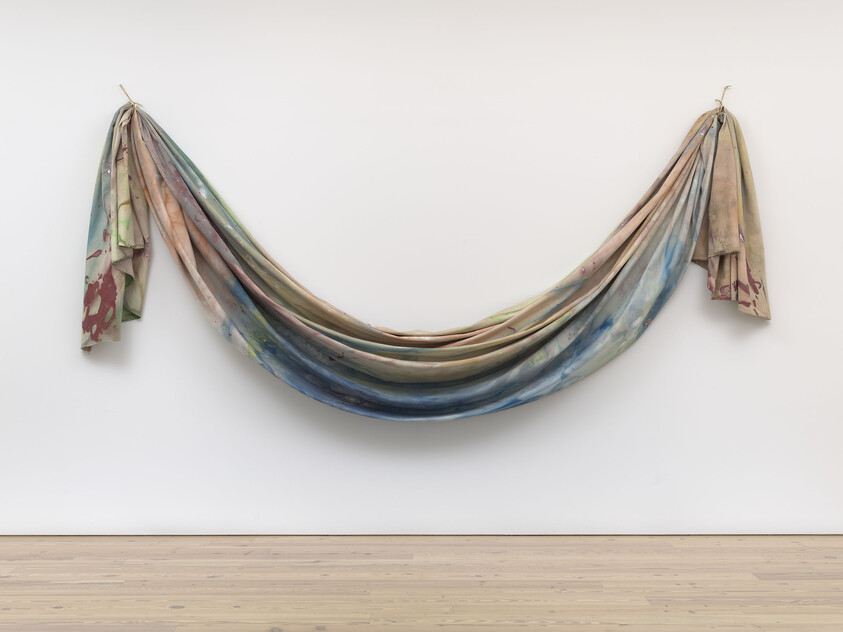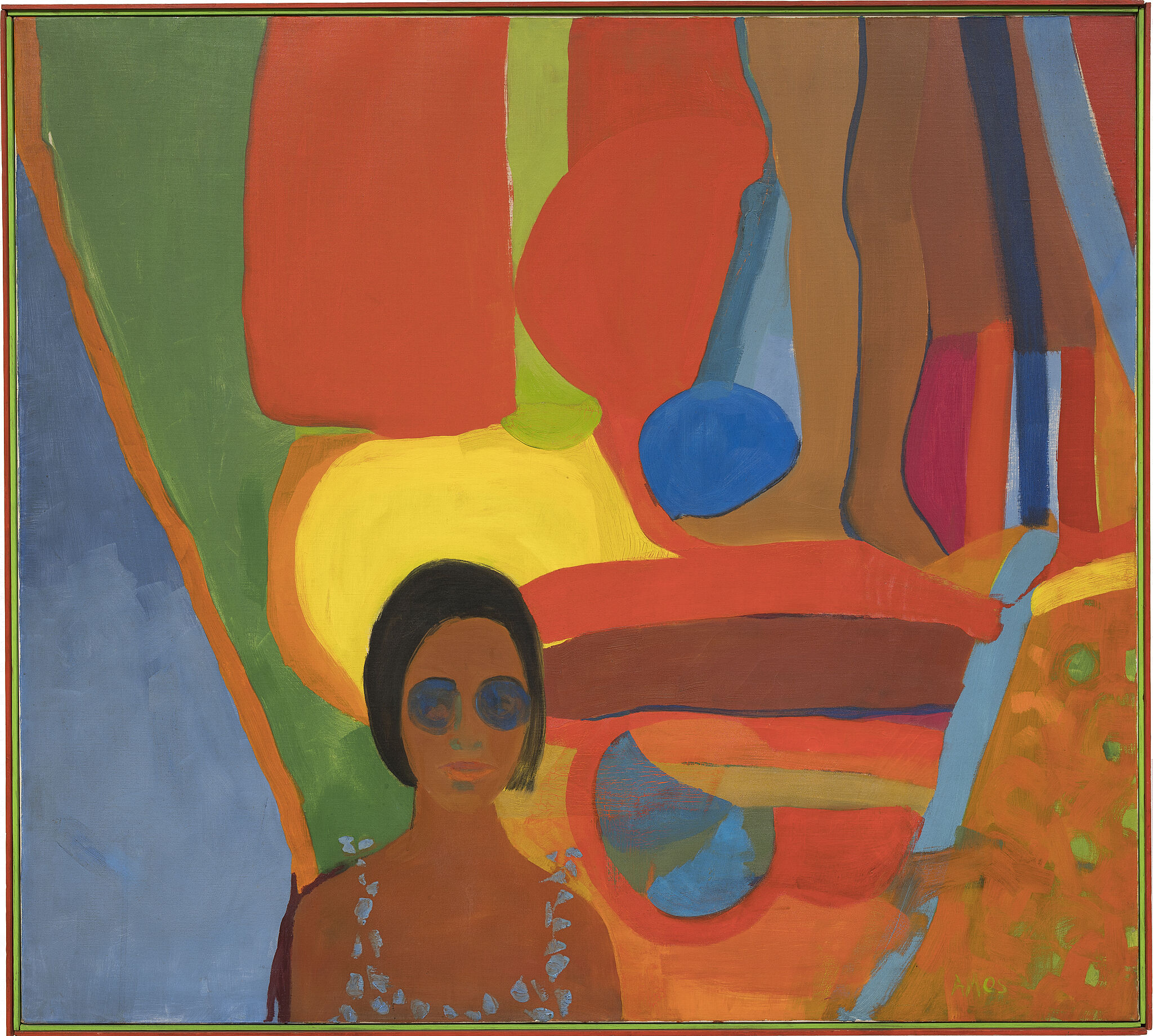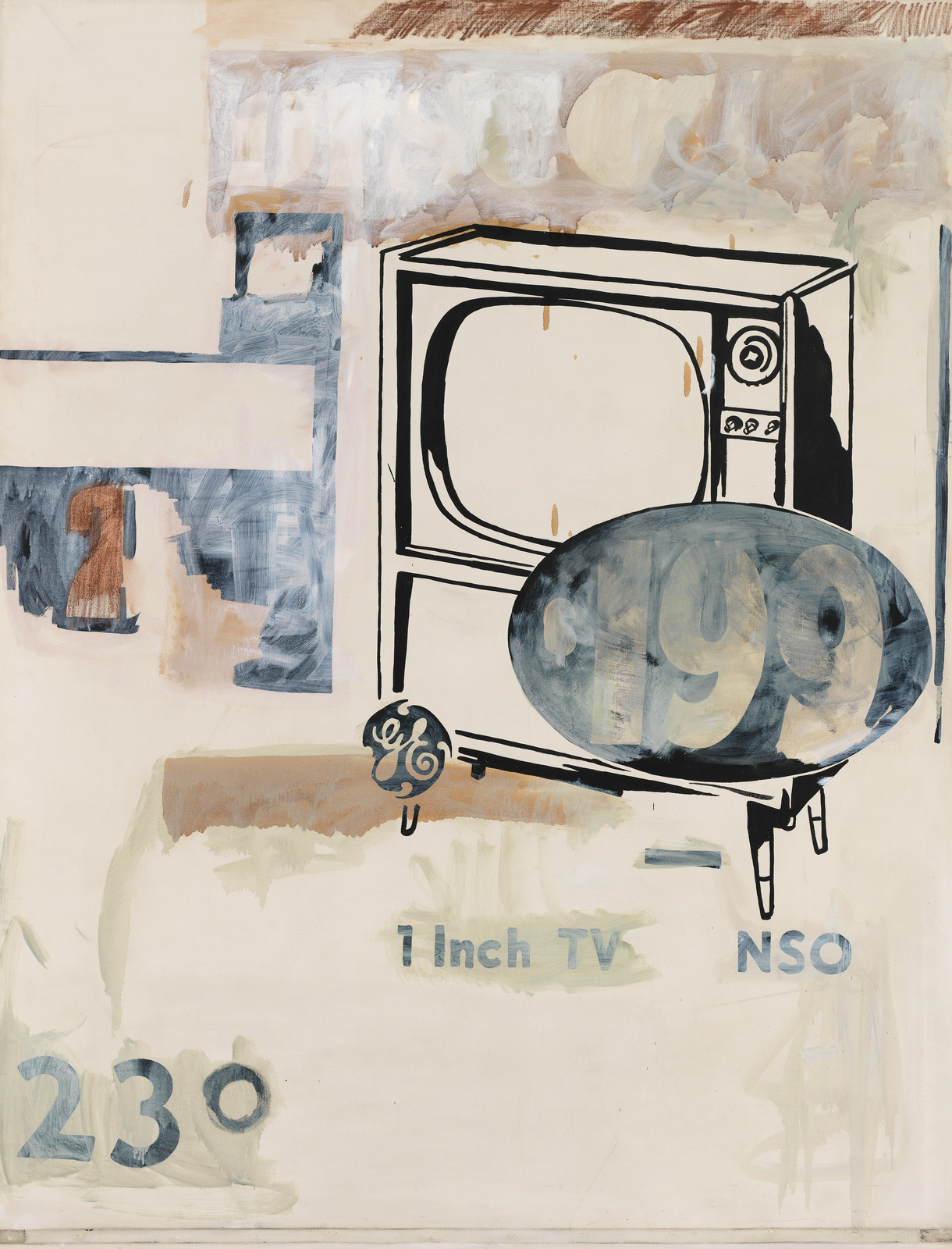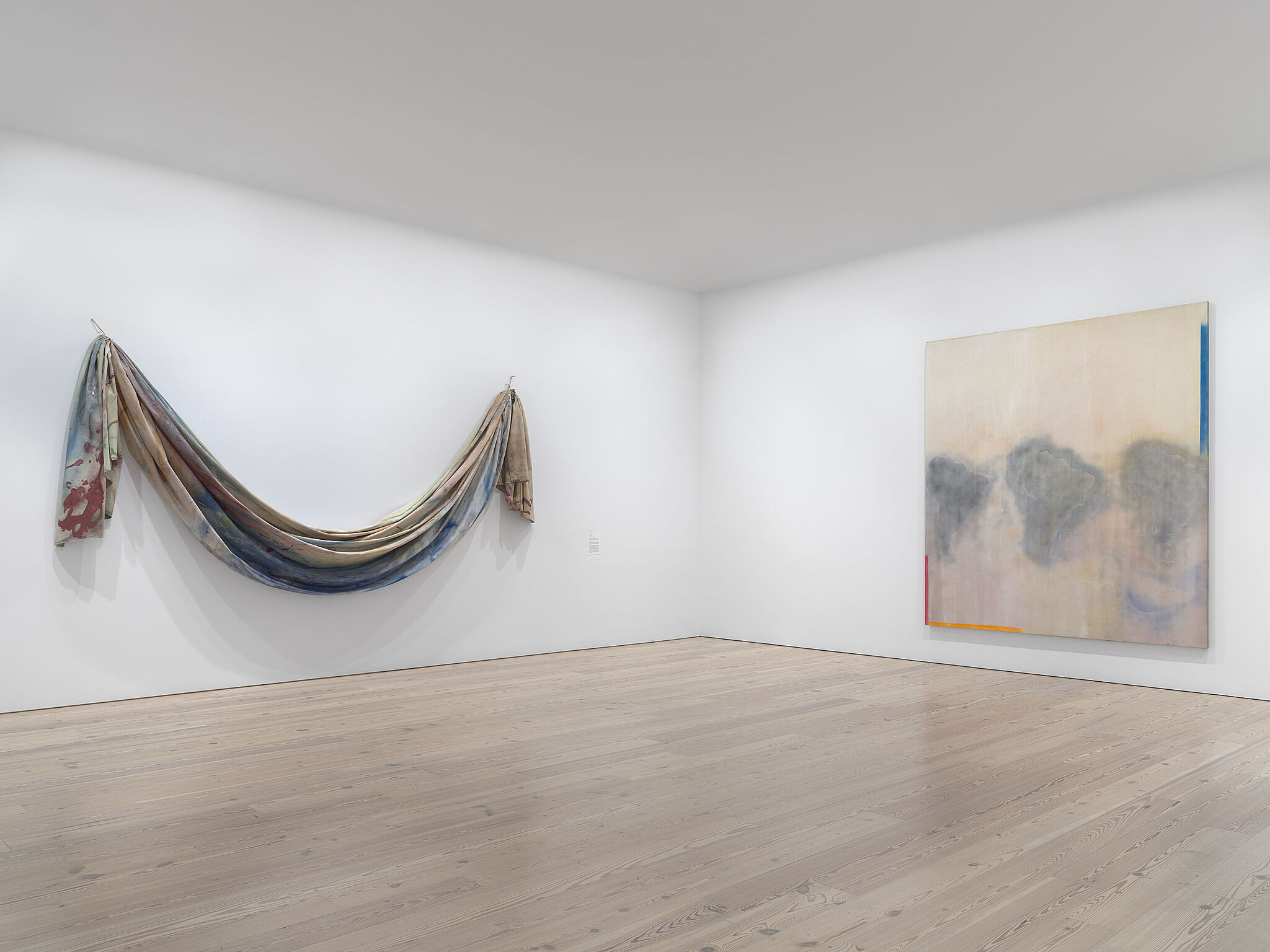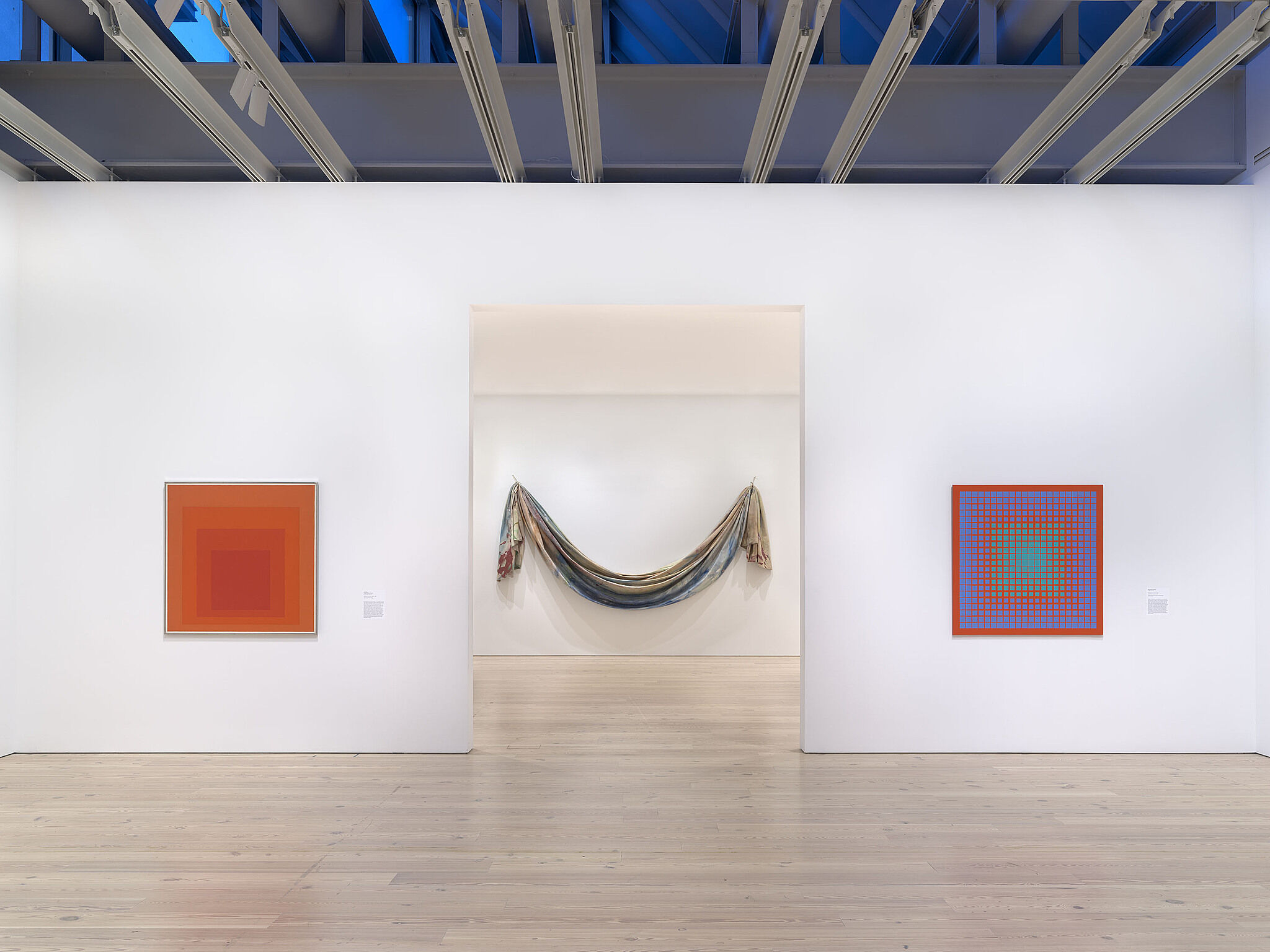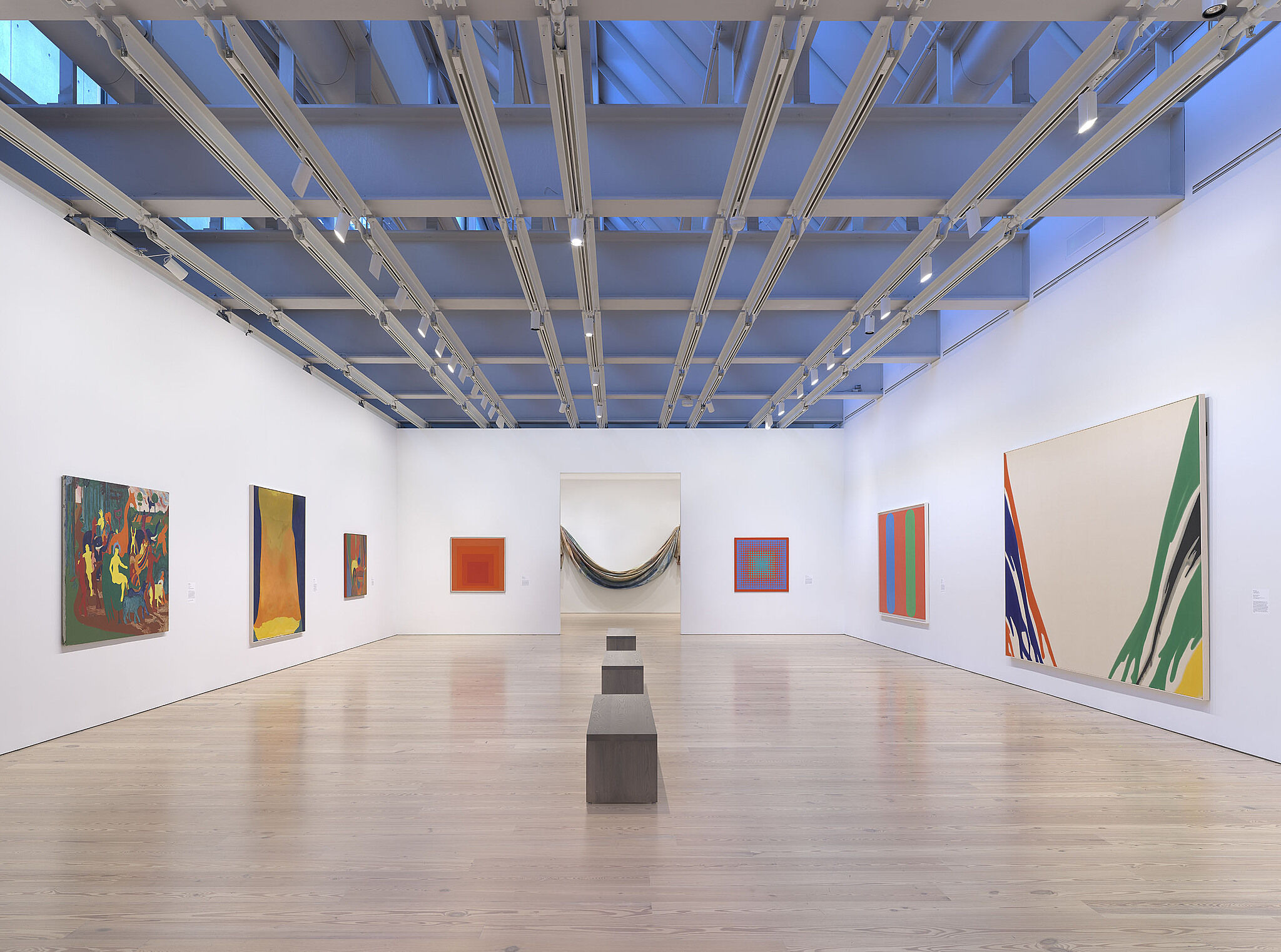Sam Gilliam: Now, when I did the drape paintings, I wasn’t making sculpture, I was reacting against painting.
Narrator: Sam Gilliam’s radical gesture as a painter—working on a canvas that was not bound to a stretcher bar—has been very influential, even on artists whose work may not look like his. One of those artists is Rashid Johnson.
Rashid Johnson: I’ve always thought about him in the early sixties, sitting in his studio in Washington, D.C., with the turmoil that’s kind of happening around him. The complexity of the time. Something as interesting as Martin Luther King marching on the Washington Monument. And there’s Sam living close by. And how he’s kind of going back into his studio and exploring shape, exploring color, then bleeding into the draped paintings, that we see that are included in this exhibition.
And what was he thinking, you know? What was the radical gesture? Was that radical gesture of emancipating the canvas from the stretcher bars one that reflected the sense of emancipation or freedom that was being searched for by people of color at the time? What relationship do those things have to one another? Because more often than not, you have to assume that there is some sort of relationship between radical gestures and art, and radical gestures and the world.
Narrator: The recording of Gilliam comes from a 1989 oral history conducted by the Archives of American Art, part of the Smithsonian Institution.

